Sustainability has become a serious factor and a necessity for a number of companies hiring facilities management professionals for leading, implementing, educating and enabling sustainable practice within their business. Sustainability in facilities management is about making smart decisions that will reduce business’s negative impact on the environment.
Furthermore, there have been a number of initiatives taken by the UAE government to ensure that buildings follow the best sustainable practices. For example, The Department of Energy (Abu Dhabi) announced the completion of the Emirate’s first Energy Saving Performance Contracting (ESPC) pilot project encompassing eight retrofitted government buildings.
The Building Retrofit programme is a part of Abu Dhabi’s Demand Side Management and Energy Rationalisation Strategy 2030, which aims for a 22% reduction in energy consumption and a 32% reduction in water consumption over the next decade.
We find out from some of the leading facilities management companies in UAE about their approach to sustainable FM and how technology plays a role in it.
Deputy CEO, Sangeetha. B, Al Fajer Facilities Management
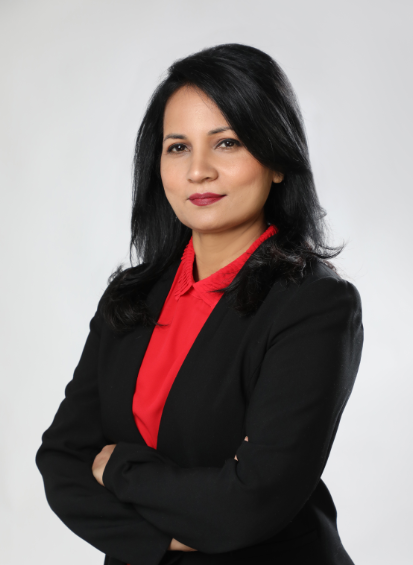
When we talk about the future, it is now often prefixed with the word ‘sustainable’. The consequences of unbridled carbon emissions have reoriented the entire globe’s perspective on how our world should function henceforth. Al Fajer FM is also steadfast in our commitment towards a new ecofriendly vision for facilities management, which is compatible with a sustainable and green world.
Modern FM contends with 3Cs; customer experience, climate change and competition. The greatest challenge that the industry faces is in addressing stringent regulations, the need for enhanced operational efficiency and reduced carbon footprints, while remaining profitable. Some effective strategies to achieve this include:
- Energy management: FM is increasingly assisting in the creation of net-zero energy buildings, by becoming involved early in the design of infrastructure, as well as through deploying innovative solutions that transform the energy utilization of existing building stock. Replacing legacy management software and installing smart meters, CAFM timers and motion sensors can now enable unprecedented energy management.
- Integrated data-driven management: Breakthroughs in cognitive technologies such as AI, IoT and ML are paving the way for integrated and data-driven FM. The resulting insight-led operations reconcile customer centric facilities with reduced inefficiencies, downtime and greenhouse gas emissions. Innovative use of RFID and related technologies allows for real time monitoring of built environments and associated automation and workforces, to optimize resource utilization.
- Waste management: Recycling and waste management are a crucial aspect of sustainable practices. Facility managers can make massive impact by recycling plastic, fertilizing landscaped areas using composted waste, and even the deployment of waste-to-energy projects, where appropriate.
- Decarbonization: Mechanized assets in buildings result in the emission of copious amounts of greenhouse gases. Digital retrofits are one way for Facilities Managers to increase the energy efficiency of this infrastructure. Since early 2017, Al Fajer has been taking a series of steps, which target the reduction of our environmental footprint by 20%.
- Eco-friendly cleaning: Recent studies have substantiated the harmful effects of several chemicals that are widely-used in cleaning products. Apart from increasing the toxicity of a built environment, chemicals can seep into soil and contaminate groundwater. Innovative practices such as using deionized water, steam cleaning and robotics hold great promise in ensuring high standards of hygiene, which are achieved using green practices like nano technology & bio – mimicking.
Besides the above, companies can also encourage more sustainable business practices by motivating employees to live closer to their workplaces and investing in technologies that empower remote working, where applicable. Service logistics is another area in which the creation of efficiencies contributes significantly to sustainability.
Considering the fact that they host most human activities, eco-friendly buildings and FM practices translate directly into radical improvements in sustainability. Effective and innovative facilities management can unlock huge potential for the transformation of our world, while also enhancing profitability, occupant experiences and brand value for CREs.
Ben Edwards, General Manager at Sodexo I Hestia
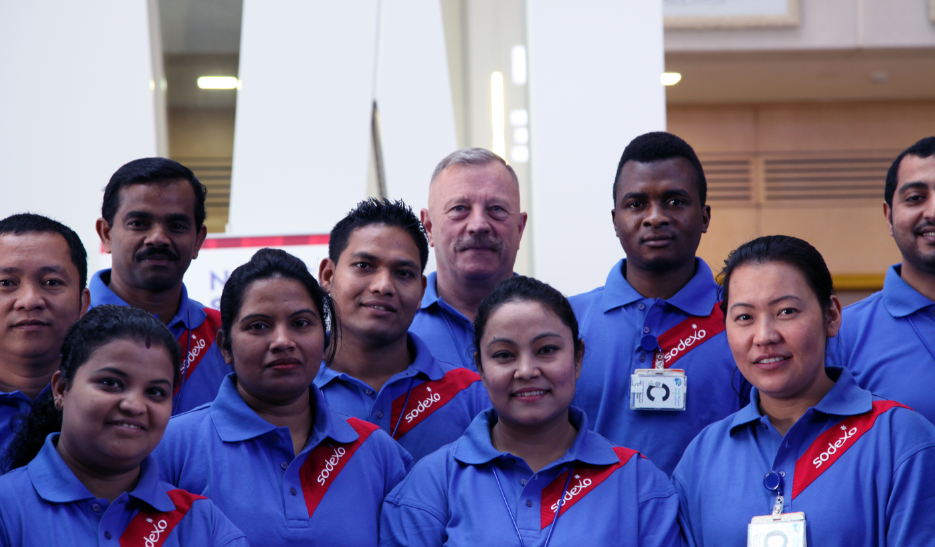 Sodexo | Hestia provides Integrated Facilities Management services representing two well respected regional (ALEC Engineering and Contracting LLC) and global (Sodexo) companies in the United Arab Emirates.
Sodexo | Hestia provides Integrated Facilities Management services representing two well respected regional (ALEC Engineering and Contracting LLC) and global (Sodexo) companies in the United Arab Emirates.
Principle to Sodexo | Hestia as an Integrated Facility Management provider, is the partnership arrangement we take with our clients. This partnering requires us to be a responsible part of their business, which includes sustainability, implementation of innovation, and the use of new technologies to the benefit of their business, the environment in which we operate, and of course, the UAE.
We, therefore, need to identify areas of energy-saving, which is now an essential requirement, but also how the client business can use global facility management advances in a local context.
For example, we utilize new technologies, products, and systems from all around the world to make the client facility more efficient and better/safer place to work, with:
- A more sustainable method to improve efficiency (reducing energy use) but also improves quality for better health and safety control
- Smart technology in the office which can assist in driving change and reducing the carbon footprint
- Measuring variables to improve service frequency and optimum consumable use to ensure staff comfort
- Monitoring tools to minimize waiting time, improve efficiency, and provide a clear plan to the client
These are just a few examples of technology and innovation that can help a client’s operational efficiency and cost-saving, plus it also assists local and regional sustainability and reduces carbon footprint. This is what a pure IFM partner, such as Sodexo | Hestia brings to the service offering as value: to the client and to the UAE.
Naiju Anselam, General Manager, AWTAD Facilities Management
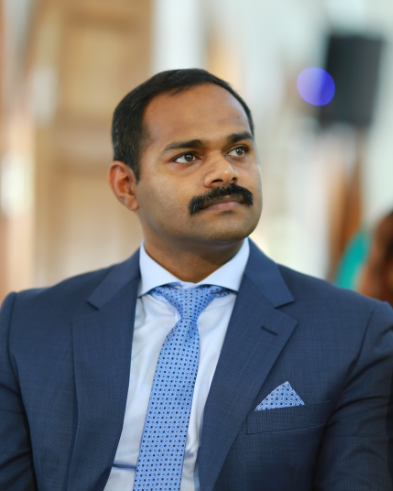 Sustainability is becoming more important for all companies, not only facilities management industries. It is built on the assumption that developing such strategies foster company longevity. Businesses are affected by an external environment as much as they are affected by the competitors. More companies are managing sustainability to improve processes, pursue growth, and add value to their companies rather than focusing on reputation alone.
Sustainability is becoming more important for all companies, not only facilities management industries. It is built on the assumption that developing such strategies foster company longevity. Businesses are affected by an external environment as much as they are affected by the competitors. More companies are managing sustainability to improve processes, pursue growth, and add value to their companies rather than focusing on reputation alone.
Many facilities management companies have publicly committed to innovate towards environmental, social and economic sustainability. The understanding of life cycle costs and sustainability practice can lead to a drastic reduction of the total cost of building ownership. LEED certified buildings have been shown to provide many economic benefits, including lower construction costs, reduced site preparation and landscaping, lower waste disposal costs, reduced operating costs, reduced maintenance costs, higher building valuation, optimize material usage and lower utility costs. In addition, improved lights, building controls, windows, implementing paper less system and other technologies make it easier than ever to achieve savings and increase productivity. And hence the facilities managers involve since the design stage of the building.
It was the old time when business companies were only concerned about their profits and revenues. With the change in time, many innovations and modifications cropped up. Today, more than ever, integrating sustainability into facilities management is important to future-proof business. Although reducing energy use is important, the truly exciting prospects for managing building energy is attributable to incorporating renewable energy resources into the built environment.
The Government is driving change. At the same time, consumers and organisations are increasingly including sustainability in their buying decisions. The triple bottom line highlights the social, environmental and economic benefits of adopting a sustainable approach to facilities management. It is one of the main systems being used by FM companies to assess the profits they are making through their corporate sustainability solutions.
The UAE has built the enablers which correspond to the sustainable development goals (SDGs) set out by the United Nations for 2030. In addition, the UAE committed more than USD 840 million (AED 3.1 billion) to renewable energy in more than 30 countries. The UAE government aims to invest AED 600 billion by 2050 to meet the growing energy demand and ensure a sustainable growth for the country’s economy.
I believe it is increasingly necessary for companies to recognise the importance of sustainability and its application in every aspect of FM by developing forward-thinking sustainability policies. This is a highly competitive market and requires FM professional who will actively contribute to that triple bottom line.
Dr. Ravi Tahilramani, Director – Transformation and Service Assurance, EFS Facilities Services Group
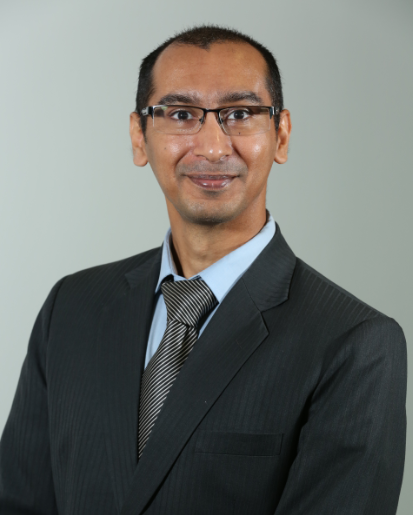 From smart buildings to sustainability, the new decade a defining era for FM. We are already experiencing the fourth wave of technological advancement, following the lean revolution of the 1970s, the outsourcing trend of the 1990s, and the automation that took place in the 2000s. At EFS, we have been an early adopter of emerging technologies as an enabler for impacting a sustainable future; improving productivity and performance; making better decisions; reducing operational risks; addressing global sustainability & environmental concerns, and complying with regulations. Disruptive technologies are creating new business transformation opportunities for everyone involved in our business value chain, which is enabling us to transcend beyond the traditional approaches towards initiatives such as energy management, paperless operations, data analysis, and so on.
From smart buildings to sustainability, the new decade a defining era for FM. We are already experiencing the fourth wave of technological advancement, following the lean revolution of the 1970s, the outsourcing trend of the 1990s, and the automation that took place in the 2000s. At EFS, we have been an early adopter of emerging technologies as an enabler for impacting a sustainable future; improving productivity and performance; making better decisions; reducing operational risks; addressing global sustainability & environmental concerns, and complying with regulations. Disruptive technologies are creating new business transformation opportunities for everyone involved in our business value chain, which is enabling us to transcend beyond the traditional approaches towards initiatives such as energy management, paperless operations, data analysis, and so on.
There is a vast amount of data being generated by buildings and assets we manage – thanks to various sensors, IoT technologies, building management systems, edge devices, and numerous networked or silo applications. It is critical to harness this data to attain sustainability in FM. Most of us have, however, been typically dealing with 1st principles, physics-based analytics – this was good enough with relatively small amounts of data manageable by humans. More than 90% of digital data that exists today was created in the past two years. To keep up with the exponential pace of data generation, EFS is leveraging on cloud computing, machine learning and artificial intelligence (AI) to overcome the limitations of calculations that can be performed by humans, and achieve truly “predictive analysis”. This is, however, not be possible without “domain experts” and “experienced FMs” who work along with (if not as) the so-called “data scientists” to help in digitizing their knowledge of critical assets, the underpinning failure modes and maintenance strategies. We need to continue involving the views of these experienced domain experts while channelling critical asset and operational data and effectively organizing it in “data lakes” or AI-ingested data.
While growing computing power is important, the rise of smarter software algorithms is emerging as the industry’s secret ingredient, with software ingenuity that will keep the virtuous circle of ingested data going strong. So, who wins in the process? Winners will not just be solution providers. They will also be asset owners, manufacturers, assurance providers, FM providers, regulators, insurers, and other industry stakeholders. Leveraging on innovation and technology in FM is a team sport; EFS is, therefore, collaborating closely with stakeholders and strategic partners to dramatically upscale insights for efficiencies towards a sustainable future.
Renaud Capris, Chief Executive Officer, Enova
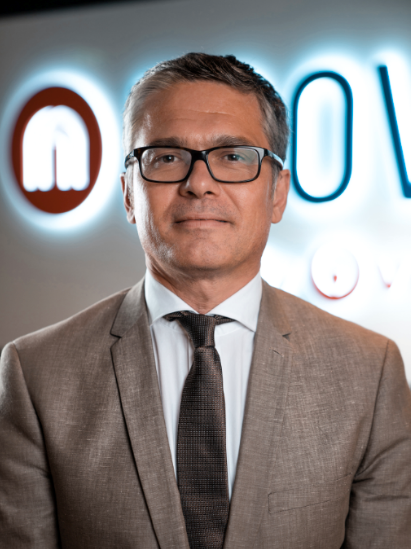 At Enova, a continuous drive for innovation is an integrated value: ‘Innovative to be Sustainable’ means across our organization we strive for new ideas and methods that add value to our clients and their customers, while preserving the world’s natural resources. In addition to analyzing building, client and end-user requirements, Enova pioneers by creating solutions of tomorrow before concrete needs manifest. Current enhancements also focus on an internal digitalization with the ‘digital employee’ and safe and efficient processes across the business at its center.
At Enova, a continuous drive for innovation is an integrated value: ‘Innovative to be Sustainable’ means across our organization we strive for new ideas and methods that add value to our clients and their customers, while preserving the world’s natural resources. In addition to analyzing building, client and end-user requirements, Enova pioneers by creating solutions of tomorrow before concrete needs manifest. Current enhancements also focus on an internal digitalization with the ‘digital employee’ and safe and efficient processes across the business at its center.
At the core of our excellence guarantee stands the smart monitoring platform Hubgrade, which currently monitors and analyzes data from over 15,000 data points and 2,500 assets across the region. In addition to powering custom-made B2B and B2C dashboards that enable automated reporting and increased awareness, Hubgrade is also entirely integrated with operational tools and the mobile applications for enhanced efficiency and environmental performance. For Enova’s Energy Performance projects, Hubgrade serves as M&V tool and allowed to guarantee more than AED 38 million in utilities savings in 2019, equivalent to 37,000 tons of CO2 avoided.
By providing an integrated solution combining Energy and Facilities Management tailored to client and end-user needs, Enova offers two key benefits. On the one hand, the buildings’ appeal is increased thanks to guaranteed healthy and comfortable conditions profiting the people that use it – be it passengers in an airport, shoppers in a mall, or hotel and restaurant guests. On the other hand, the increased efficiency reduces the consumption of precious resources and waste production, leading to a lower environmental impact of the buildings while simultaneously cutting operational costs. Hence, it is a win-win for both the clients and their end-users as well as the environment.
As residents of the MENA region spend up to 90% of their time indoors, Enova highlights Indoor Environmental Quality (IEQ) as one of its focus areas for the near future. The trend shows that an increasing number of clients make Indoor Air Quality (IAQ) a priority and Enova has developed a cost-effective, integrated approach to satisfy this need: putting the building occupants at the heart of the services offer, by maintaining a healthy and optimized indoor environment.
For Enova, the digital transformation and sustainability go hand in hand, as digital solutions play a crucial role in increasing the environmental performance of buildings. Enova’s digital suite targeting increased sustainability has secured multiple awards over the past years.
Markus Oberlin, CEO, Farnek
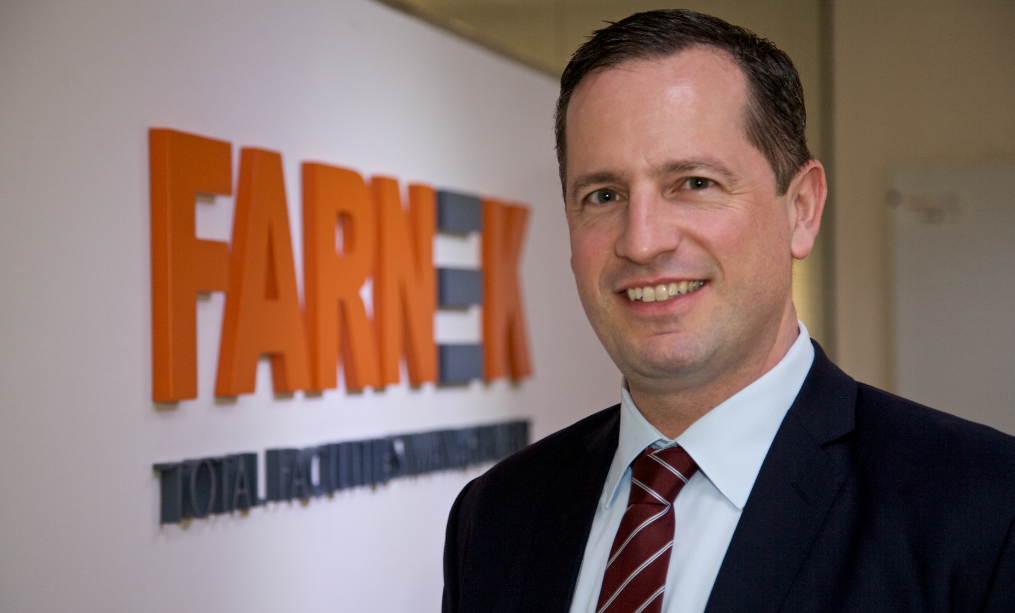 Overall the role of facilities management is to ensure a safe and secure environment for everyone, protecting the value of the real estate asset, through optimum building performance and lifecycle longevity.
Overall the role of facilities management is to ensure a safe and secure environment for everyone, protecting the value of the real estate asset, through optimum building performance and lifecycle longevity.
However, one of the most important aspects of FM is sustainability, which can reduce carbon emissions as well as save money – it’s a win-win solution.
There are many ways to achieve this, in an ideal world, the early introduction of FM services can significantly minimise the impact of poor design and build issues, particularly in terms of heating, ventilation and air conditioning (HVAC), by ensuring the ‘maintainability’ and ‘operability’ of the building, for the life span of the development. If this is not possible, FM can still help to reduce existing expenses as well as future cost implications through retrofitting.
For developments that have not implemented environmentally friendly measures, retrofitting all elements of HVAC is imperative to become more sustainable. Enhancing Building Management Systems (BMS) to allow for more accurate monitoring and analysis of energy consumption is one of the first steps in major energy and cost savings.
For example, temperature and humidity sensors can be installed on every floor to transmit information to the management system which then decides whether mechanical and lighting equipment, should be activated or not. There have also been several buildings equipped with ice storage/making facilities that make ice at night when electricity is cheaper, and then melts during the day to cool the building, Burj Khalifa uses such a system.
Greener restroom facilities can be achieved by using the most advanced and innovative technologies, IoT sensors, machine learning, AI and cloud architecture to promote air quality, identify water leaks and spillages. It can also monitor washroom usage as well as consumables, to offer the best possible cost and energy-efficient customer experience. Solar panels to heat water and provide lighting can also be installed on the roof for added benefits.
Other simple steps that can be taken include, installing LED lights, air conditioning modules and tap aerators, to help save electricity and water. Tinted crystalline films can be fitted on windows to reduce the heat generated by sunlight, while using light-reflecting paint on the outer walls and the roof can help to cool exterior walls.
Eng. Ali Al Suwaidi, Vice President of MEFMA
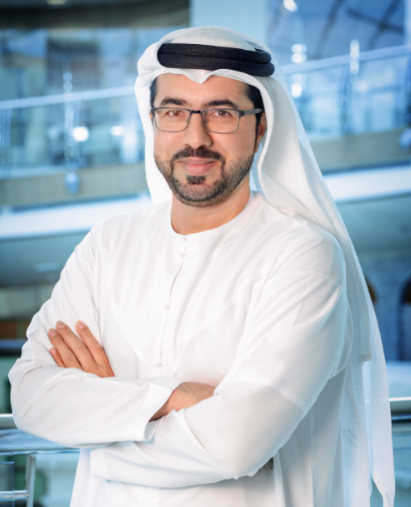 In the world of facility management (FM), the sustainability concept encompasses these three dynamic fundamentals: environmental, economic, and social. Meeting the sustainability triple bottom line requires the effective use of available technologies and innovations.
In the world of facility management (FM), the sustainability concept encompasses these three dynamic fundamentals: environmental, economic, and social. Meeting the sustainability triple bottom line requires the effective use of available technologies and innovations.
Take for instance the social aspect of sustainability. In FM, this means ensuring the welfare of employees and actively engaging with customers. Sustainability is achieved once we have guaranteed the satisfaction of customers and the safety of employees, who are also trained to strictly follow good work ethics. In this regard, next-generation tools come into play.
Technologies and innovations can also make a difference in our sustainability initiatives and Corporate Social Responsibility (CSR) programs, as well as in the efforts to build transparent relations and create a strong connection with customers and colleagues. Such efforts have led several companies to introduce the geofencing technology, which promotes effective collaboration and utilization of the right tools.
For the economic and environmental aspects, these two are more aligned. Through our sustainability initiatives, we become more mindful of our carbon footprint and the use of resources. The latter leads to substantial savings for both FM companies and their customers. For example, several FM companies have leveraged next-generation tools, including artificial intelligence and the Internet of Things (IoT), to promote efficient energy consumption and deliver cost-effective maintenance services. Through these technologies, companies can monitor the performance of every aspect of the facility, including equipment and other systems. They can also integrate the operations system into the energy monitoring system to save at least 20 per cent of the overall operational and energy costs.
At the Middle East Facility Management Association (MEFMA), we have been raising awareness on and emphasizing the significance of various technologies that help FM companies achieve the triple bottom line of sustainability. We believe in the crucial role of technologies in delivering accurate FM services. For example, FM service providers can use modern tools to measure the building’s performance, including energy and water use, monitor its behaviour, and track the patterns. Is it over-occupied or under-occupied? Is it economical to use a technology occupancy sensor and counting machine for toilets? Are we optimizing resources during peak hours and days?
Technologies are the key to establishing trends and patterns, thus helping FM companies optimize the building’s operations and maintenance.
Mohamed Youssef, Senior Vice-President, Infrastructure, Middle East & Africa, SNC-Lavalin
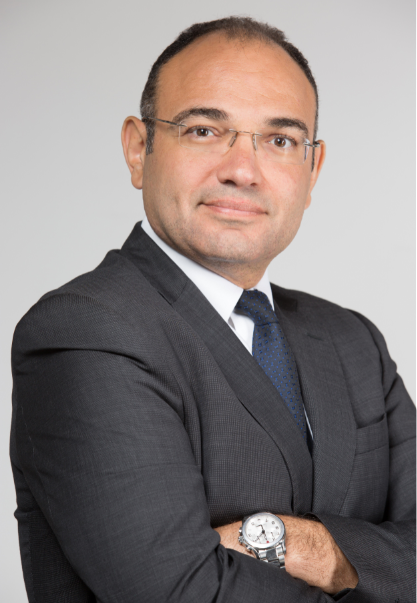 Developing facilities with low ecological footprint is becoming top of mind for developers and asset managers in the Middle East. Hence, sustainability planning and green standards are key pillars of the design and construction process that delivers the efficient operation and maintenance (O&M) of new and existing builds.
Developing facilities with low ecological footprint is becoming top of mind for developers and asset managers in the Middle East. Hence, sustainability planning and green standards are key pillars of the design and construction process that delivers the efficient operation and maintenance (O&M) of new and existing builds.
This requires a comprehensive approach that integrates key sustainability standards, from conceptual design stages and throughout the asset lifecycle. A proper selection of assets that will deliver the desired benefits is essential. The choice of materials and equipment that can positively impact not just the asset’s sustainability but all aspects of its development is also important.
Another key factor to enhance sustainability in facilities management is training the workforce on best practices, policies and procedures to ensure effective implementation of sustainability strategies put in place. Also, raising awareness among end-users about these practices and their impact on the environment is pivotal to drive long term impact.
However, sustained progress can be achieved through progressive regulation and initiatives focused on promoting a green culture. For example, the UAE-based Middle East Facility Management Association (MEFMA) help promote a standardized framework for sustainable facilities management strategies to be adopted by key stakeholders in the construction industry across the region. SNC-Lavalin works closely with clients across the region to establish the framework for sustainable strategies, policies and working practices for facilities management.
This is achieved by providing appropriate guidance in design reviews and material selection, ongoing staff training and awareness campaigns, data monitoring, and management systems.
In brief, driving sustainability planning and implementation in facilities management require collaboration between key stakeholders to adopt effective strategies and promote health and safety practices towards creating sustainable communities for the future.
Michael Nicholas, General Manager, Tafawuq Facilities Management
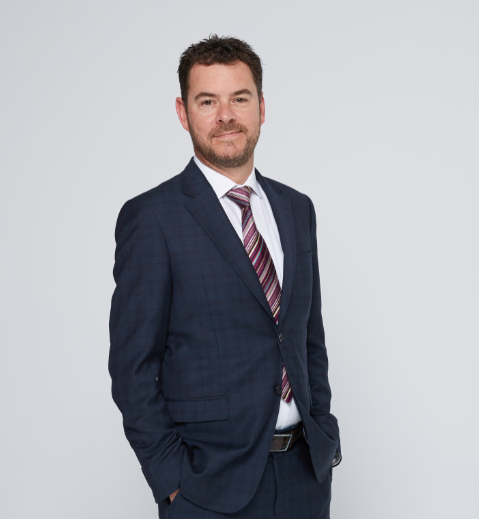
Sustainability is firmly on the business agenda around the world as seen during this month’s WEF gathering of political and business leaders in Davos, and the efficiency of buildings has naturally come under the spotlight. As technology becomes increasingly popular, facilities management (FM) companies are making use of the technology to achieve sustainability.
Climate adaption, energy efficiency, sustainable development and green growth are societal challenges for which the FM industry can collectively devise and develop solutions and make positive contributions to communities. The concept of Sustainable Facilities Management has developed and the need to balance the three strands of sustainable development – social, economic and environmental – has become apparent.
Leading figures within the FM profession have identified the need for both change and practical sustainability goals; with facility managers at the forefront of organizational behavioral change and in a position to influence the behavior of individuals working in business, government departments and public services within the facilities they are responsible for.
The use of smart technology in FM can help achieve sustainability. By integrating smart technology into retail premises, offices and residential communities, operational efficiency can be optimized as building automation is able to carry out more and more checks and adjustments without the need for human interference.
At Tafawuq, we place great importance on sustainable operations as key component of our 5 year strategic plan. We constantly monitor our operations to identify where our work negatively impacts the environment, and work on solutions to those problems. Since 2014 we took the first step by implementing an Integrated Management System (IMS) that comprises ISO 9001 Quality Management System, ISO 14001 Environmental Management System and OHSAS 18001 Occupational Health and Safety Management System – all of which are international standards while all EHS operations conducted by Tafawuq Facility Management align with the Abu Dhabi Environmental Health and Safety Management (AD EHSMS) Regulatory Framework, and Dubai Municipality Technical Guidelines.
The IMS Forces us to regularly evaluate our environmental impacts, ensure proper precautions are taken on site, track our environmental data, and ensure we are aligned to federal and local regulations on the environment.
Technology has also improved our sustainability track record. Since we introduced our maintenance mobility tool Tafawuq GO in Q1 2019, our maintenance teams have reduced the use of paper by 100% on most sites, as the end to end maintenance recording process is now paperless.
Tafawuq teams work with their clients to monitor and proactively reduce utility consumption on the assets that the company maintains, as energy generation is one of the most significant sources of CO2 emissions to the atmosphere. These initiatives have resulted in millions of dirhams being saved during 2019 across our project portfolio and Tafawuq is proud to have taken part.
As we look forward to 2020, a number of new initiatives will be launched to help us strive further on the road to sustainability. Remote utility meter monitoring, energy performance dashboards, IOT sensors will all allow Tafawuq to enhance the efficiency of the assets it maintains, ultimately leading to lower energy consumption which helps the environment.












